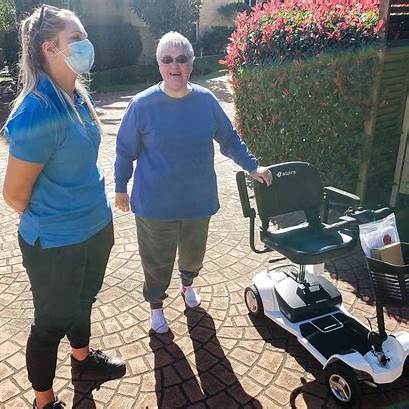The value of an Occupational Therapist for a rider of a Mobility Scooter.
An Occupational Therapist (OT) can be surprisingly valuable for someone just starting out with a mobility scooter. Their role goes well beyond medical care—they focus on practical independence, safety, and quality of life. Here are some ways they can help:
NEW USERS
Mobi-oh-one
10/1/20252 min read


Why See an Occupational Therapist Before Riding Your Scooter?
Starting out on a mobility scooter can feel a bit like learning to drive all over again. That’s where an Occupational Therapist (OT) can be a real help.
An OT looks at the whole picture: your health, your environment, and the way you want to use your scooter. They can check if you’ve got the vision, reflexes, and confidence to ride safely, and suggest the scooter model that best suits your height, weight, and lifestyle.
But their role doesn’t stop there. OTs often provide hands-on training, from learning to start and stop smoothly, to navigating busy footpaths and dealing with traffic. They can also recommend small but important adjustments—like the right seating support, mirrors for visibility, or a basket for everyday outings—that make riding more comfortable and enjoyable.
Most importantly, they’ll help you build confidence and independence. Whether it’s getting to the shops, joining in social activities, or simply enjoying a ride on the pathway, an OT makes sure your scooter becomes a safe and reliable part of everyday life.
1. Assessing Suitability
Physical ability: An OT can check if the rider has the vision, reaction speed, coordination, and strength needed for safe scooter use.
Cognitive readiness: They can assess decision-making, awareness of traffic, and ability to follow road rules.
Environmental fit: OTs often consider where the person lives—hilly terrain, narrow footpaths, or busy streets—and how that affects scooter use.
2. Training & Confidence Building
First lessons: Just like learning to drive a car, OTs can provide structured training—starting, stopping, turning, and navigating obstacles.
Traffic awareness: They can coach riders on safe road and footpath sharing, pedestrian etiquette, and understanding scooter limits.
Confidence boosting: New users may feel anxious; OTs help reduce fear and build safe habits.
3. Customisation & Comfort
Scooter choice: OTs can advise which model best fits the rider’s height, weight, posture, and lifestyle.
Seating & ergonomics: They can recommend adjustments, cushions, or accessories (like mirrors, baskets, or weather covers) for comfort and long-term use.
Accessibility advice: Guidance on home entryways, ramps, or storage so the scooter integrates smoothly into daily life.
4. Safety & Risk Management
Fall prevention: Tips for transferring on/off the scooter safely.
Battery awareness: Helping users manage charging routines without hazards.
Emergency planning: What to do if the scooter stops working away from home.
5. Holistic Independence
OTs don’t just focus on the scooter itself—they look at how it supports daily life. For example: shopping, attending social events, getting to medical appointments, or enjoying leisure activities.
They may also connect new riders to community resources, scooter safety workshops, or local scooter clubs or groups.
✅ In short: an Occupational Therapist helps a new scooter user choose wisely, ride safely, adapt comfortably, and stay independent. An Occupational Therapist can make the difference between just owning a scooter—and truly enjoying the freedom it brings.


